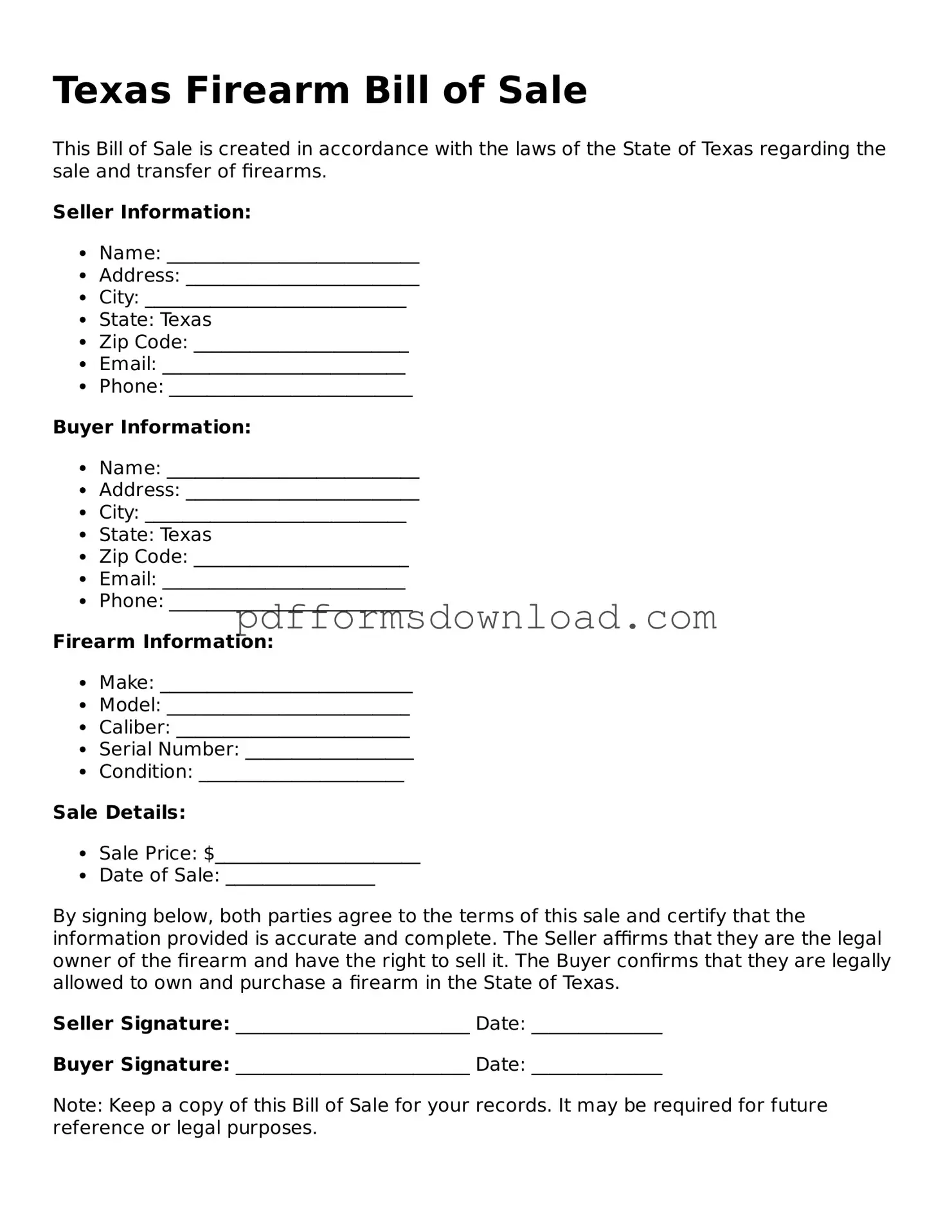What is a Texas Firearm Bill of Sale form?
The Texas Firearm Bill of Sale form is a legal document that records the transfer of ownership of a firearm from one person to another. This form serves as proof of the transaction and includes important details such as the make, model, and serial number of the firearm, as well as the names and signatures of both the buyer and the seller. While it is not required by law to use this form for private sales in Texas, it is highly recommended to ensure both parties have a clear record of the transaction.
Is a Texas Firearm Bill of Sale form necessary for private sales?
No, a Texas Firearm Bill of Sale form is not legally required for private sales of firearms. Texas law allows individuals to sell or transfer firearms without a formal bill of sale. However, having this document can provide legal protection and clarity for both the buyer and the seller. It helps establish that the seller is no longer the owner of the firearm and can protect against potential liability issues that may arise after the sale.
What information should be included in the Texas Firearm Bill of Sale form?
When completing a Texas Firearm Bill of Sale form, it is important to include specific information to ensure the document is comprehensive. Key details should consist of the date of the sale, the names and addresses of both the buyer and the seller, a detailed description of the firearm (including make, model, caliber, and serial number), and the sale price. Both parties should also sign and date the document to validate the transaction.
Can I create my own Texas Firearm Bill of Sale form?
Yes, you can create your own Texas Firearm Bill of Sale form. While there are templates available online, you have the flexibility to draft a form that meets your needs, as long as it includes all the essential information. Ensure that both parties understand and agree to the terms of the sale. It’s advisable to keep a copy of the completed bill of sale for your records, regardless of whether you use a template or create your own.
